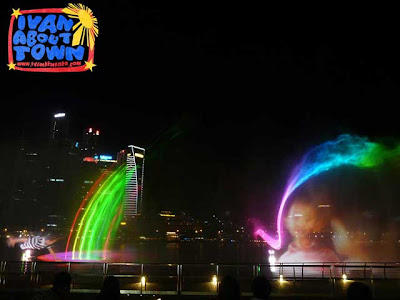Update (07/25/2012): The GSIS Building will be incorporated with the new Hall of Justice of the Supreme Court. We thank the National Historical Commission of the Philippines and the Supreme Court for this development.
Update (07/11/2012): We just received information that engineers from Manila City Hall had written the owner of the GSIS Building ordering its demolition. In a few days, we remember the Jai Alai tragedy. We should not let it happen again! Archt. Dominic Galicia informed us, "Reliable reports say that there are renewed and very serious pressures to demolish the old GSIS headquarters building behind Manila City Hall. Only the attention of media and the general public can save it, by reminding Manila City Hall that the Heritage Law, Republic Act 10066, protects this beautiful landmark."
 |
| Former GSIS Headquarters (Photo from Paulo Alcazaren) |
Here is an appeal from Archt. Dom Galicia of the Heritage Conservation Society (HCS) and ICOMOS Committee on 20th Century Heritage:
We are hearing reports that Manila City Hall has given the OK to demolish the old GSIS Headquarters building on Arroceros Street designed by Federico Ilustre. The Heritage Law states that it would be a crime to demolish a structure of this vintage, which is older than 50 years, without permission from the NCCA. Considering the cultural value of this structure, that permission is not likely to be forthcoming. See the attached photo from Paulo Alcazaren's archive.
It's abandoned and needing repair, but still a beautiful, elegant and intelligent response to climate and site, eminently suitable via adaptive reuse for whatever new purpose comes to bear.
On the heels of February's demolition of the old Meralco Building on San Marcelino and, soon after, the Laperal Building on Claro M. Recto, this first half of 2012 could live in patrimonial infamy, in spite of all the strides being made with Manila Central Post Office and Escolta.
Please write Manila Mayor Alfredo Lim at mayorlim@manila.gov.ph. Let him know that the old GSIS Building can be saved via adaptive reuse. It is also important that you cc: your email to hcs_secretariat@yahoo.com. HCS will help make sure that the Mayor sees your message.
Remember the Jai Alai!
 |
| HCS members checked Wikimapia. And lo and behold, the GSIS Building is labeled as SM Manila's Annex! |
Another piece of information comes from Wikimapia and that it will allegedly become an annex of SM Manila. If the GSIS Building is torn down to make way for another SM building, that will add to their crimes against heritage which includes the demolition of the San Lazaro Hippodrome (now SM San Lazaro), YMCA (now SM Manila), Pines Hotel (now SM Baguio) and the many pine trees they massacred to build the mall, Emilio Aguinaldo College (now SaveMore Sta. Ana) and the Benguet Building of National Artist Leandro Locsin among many others.
More photos of the GSIS Building in SkyscraperCity.












































